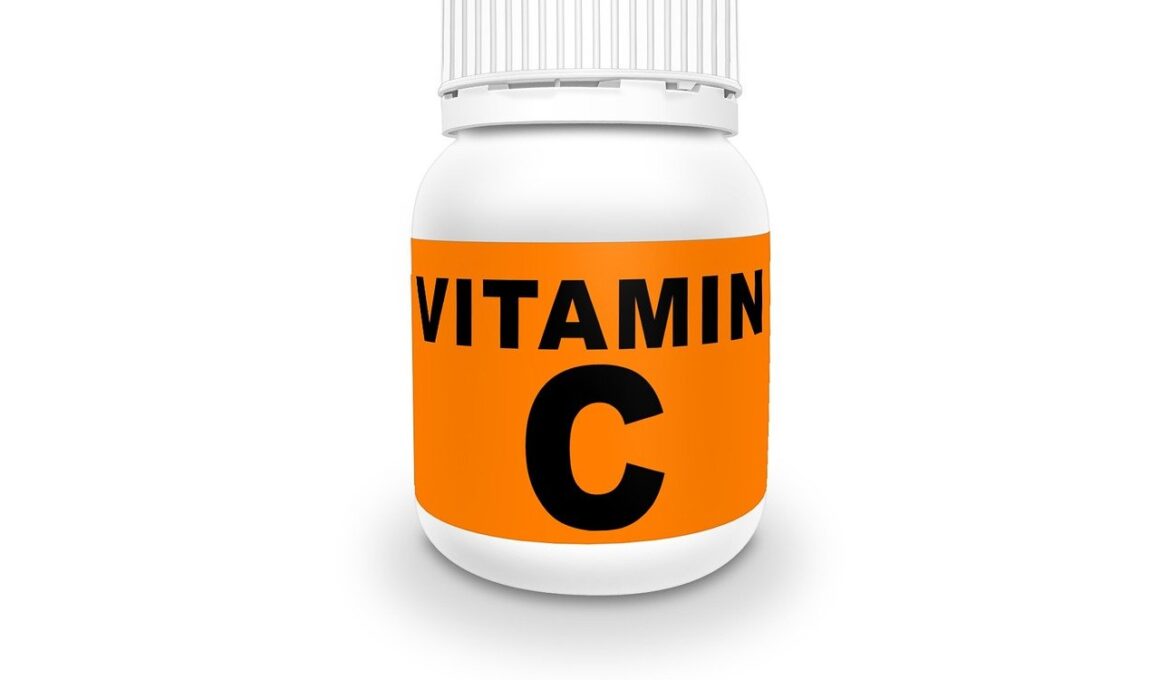Vitamins and Minerals: What Nutrition Labels Tell You
Understanding nutrition labels is crucial for making informed dietary choices. When examining these labels, pay close attention to the vitamins and minerals listed, as they indicate the essential nutrients present in a product. Typically, manufacturers display these items prominently to highlight potential health benefits. Nutrients such as vitamin A, C, D, calcium, and iron are commonly included, each playing a significant role in maintaining health. For example, vitamin A is vital for vision and immune function, while vitamin C is important for skin health. Calcium is essential for bone strength, and iron is crucial for blood production. Reading these labels effectively can empower consumers to select foods that support specific nutritional needs. Additionally, be aware that the % Daily Value (%DV) helps gauge if a food contributes to the daily intake for those specific nutrients. It is vital to balance these nutrient intakes with the associated %DV. Regularly consuming foods with high levels of essential vitamins and minerals can lead to improved health outcomes and enhanced bodily functions. Pay special attention to whole food options that naturally contain these nutrients for a healthier lifestyle and better dietary decisions.
When assessing a product’s nutrition label, it is essential to recognize that not all vitamins and minerals are equally emphasized by manufacturers. Often, the claim made on the packaging influences consumer decisions. For instance, products advertising high amounts of a particular nutrient tend to garner more attention. However, being well-informed about the actual nutrient content requires a careful review of the nutrition facts and the ingredients list. Sometimes, additives or preservatives can overshadow the presence of beneficial nutrients such as vitamins and minerals. Another critical aspect to keep in mind is how processed foods may strip away some nutritional value. When reading nutrition labels, prioritize options that maintain the integrity of their vitamins and minerals. This often means choosing whole, less processed foods when possible. Foods cultivated naturally or prepared with minimal processing retain their nutrients better than those heavily modified. Incorporating a variety of foods in daily meals can also cover potential gaps in nutrient intake, ensuring that your body receives everything it needs. Remember to consult with nutrition guidelines when trying to meet your daily requirements, as balance is key in every approach.
The Importance of Vitamin A and C
Vitamin A and vitamin C are crucial vitamins that contribute significantly to overall health. Vitamin A plays a fundamental role in vision, immune system function, and skin health. It is found in foods such as carrots, sweet potatoes, and spinach. Therefore, ensuring adequate vitamin A intake is crucial. On the other hand, vitamin C is well-known for its antioxidant properties and is essential for the growth and repair of tissues in the body. Rich sources of vitamin C include citrus fruits (oranges and lemons), strawberries, and bell peppers. As such, reading the nutrition labels on products can help you identify those that contain these vital vitamins. When examining the ingredient list, prioritize foods that prominently feature these vitamins, ensuring you’re meeting daily recommendations effectively. Look for products with a % Daily Value (%DV) close to or exceeding 20% for these nutrients. Consuming a diverse range of foods allows you to reach your vitamin needs while enjoying an assortment of flavors. Thus, assessing nutrition labels can guide choices that bolster your intake of vitamin A and C, promoting better health and immunity.
Calcium is another essential mineral you should be conscious of while reading nutrition labels. It is critical for bone health and the prevention of osteoporosis later in life. Calcium plays a vital role in bodily functions such as muscle contraction and blood clotting. Many individuals fail to consume adequate amounts of calcium throughout their lives, leading to potential long-term health issues. To ensure you’re getting enough calcium, look for fortified products such as dairy alternatives like soy or almond milk, which may contain added calcium. Additionally, foods like leafy greens, sardines, and fortified cereals count among good calcium sources. Always check the nutrition facts and ingredient labels for calcium content specified in milligrams. Recommended dietary allowances (RDAs) for calcium vary by age and sex, leading to different daily needs. Therefore, make it a goal to consume foods rich in calcium. This not only strengthens your bones but also supports overall health. By understanding the importance of calcium and monitoring it through product labels, you can intentionally work towards achieving optimal health and reducing risks associated with calcium deficiency.
The Role of Iron in Your Diet
Iron is an essential mineral that is involved in oxygen transport throughout the body, among many other functions. It’s vital for generating red blood cells and transporting oxygen to tissues. Iron deficiency can lead to anemia, leading to fatigue, weakness, and a compromised immune system. Thus, reading nutrition labels to determine iron content is key for anyone at risk of deficiency, such as pregnant women, vegetarians, or those with certain health conditions. Food sources rich in iron include lean meats, beans, lentils, tofu, and fortified cereals. When examining product labels, prioritize items that list iron well into the percent daily value. Look for foods that help increase iron bioavailability, such as pairing iron-rich sources with vitamin C sources like citrus fruits to enhance absorption. In contrast, certain foods like dairy and coffee can inhibit iron absorption, so consider timing your meals accordingly. Understanding iron’s role and ensuring you meet daily requirements can greatly improve energy levels and overall well-being. By actively monitoring your iron intake through nutrition labels, you can better support your health needs.
Choosing foods that emphasize essential vitamins and minerals through nutrition labels can significantly influence your health over time. Additionally, while it’s important to focus on these nutrients, remember that moderation is key in all aspects of nutrition. Balance your diet to include a combination of carbohydrates, proteins, healthy fats, vitamins, and minerals. Strive to incorporate whole foods into your routines, as they often naturally contain more nutrients than processed options. This can be achievable by planning meals centered around fresh fruits, vegetables, whole grains, lean proteins, and healthy fats. For example, salads with a variety of leafy greens and colorful vegetables topped with a healthy oil-based dressing can enhance your intake of minerals and vitamins. Education around nutrition labels can help you become a more conscious consumer. Look for products that offer transparency, including a clear list of vitamins and minerals that supports overall well-being. Stay informed, and don’t hesitate to seek advice from healthcare professionals or registered dietitians who can provide personalized recommendations tailored to your health goals. Empowering yourself with nutritional knowledge will ultimately enable you to make healthier food choices.
Conclusion: A Healthier Future Through Informed Choices
Ultimately, reading nutrition labels is an essential skill that can guide you toward a healthier lifestyle. By identifying key vitamins and minerals, you can ensure that your diet meets your specific nutritional needs. It allows you to make informed choices and empowers you to buy products that truly support your health. Equip yourself with the tools to comprehend what goes into your body. Regularly consuming an array of foods rich in crucial nutrients such as vitamins A, C, D, calcium, and iron sets the foundation for solid health. Remember that changing dietary habits takes time, and the goal is progress, not perfection. Focus on incorporating nutrient-dense foods gradually. This not only enhances personal health, promoting well-being but also fosters a more sustainable lifestyle. Share this knowledge with friends and family; engaging others in this nutritional journey can deepen understanding and foster community. By prioritizing education about nutrition labels, you’ll ultimately pave the way for a healthier and happier future, both for yourself and those around you. Start today by being more vigilant about what you consume, driving lasting change for an improved lifestyle.
In conclusion, knowledge is power when it comes to nutrition labels on food products. As you work towards enhancing your diet through vitamins and minerals, remember that this process is about balance, education, and making smart food choices. Use your understanding of nutrition labels to augment your meals positively and meet your health goals effectively. Nutrition labels serve as a guide leading you toward healthier selections, thus making you a more conscientious consumer. Be diligent in selecting foods that align not only with your taste preferences but also with your nutritional needs. Engage professionals if you’re uncertain about the best dietary choices for your particular situation. Share what you learn with others, and build a culture of health awareness within your community. The road to better health often begins with informed choices, and nutrition labels are a vital component of your journey. By focusing on vitamins and minerals and understanding their importance in daily intake, you can significantly enhance your overall quality of life. Better health is not just a personal win; it’s a gift that extends to your loved ones and your community.


